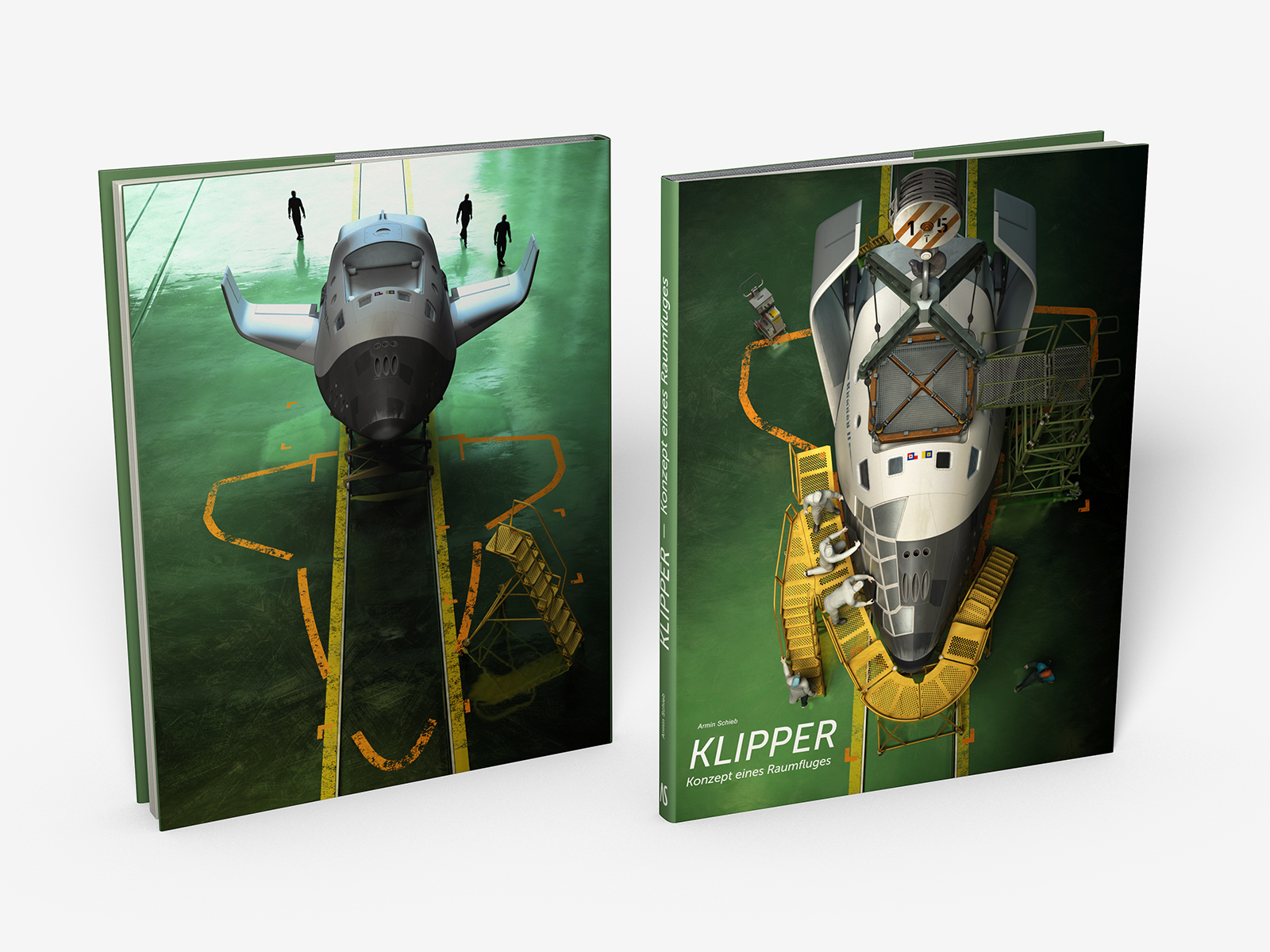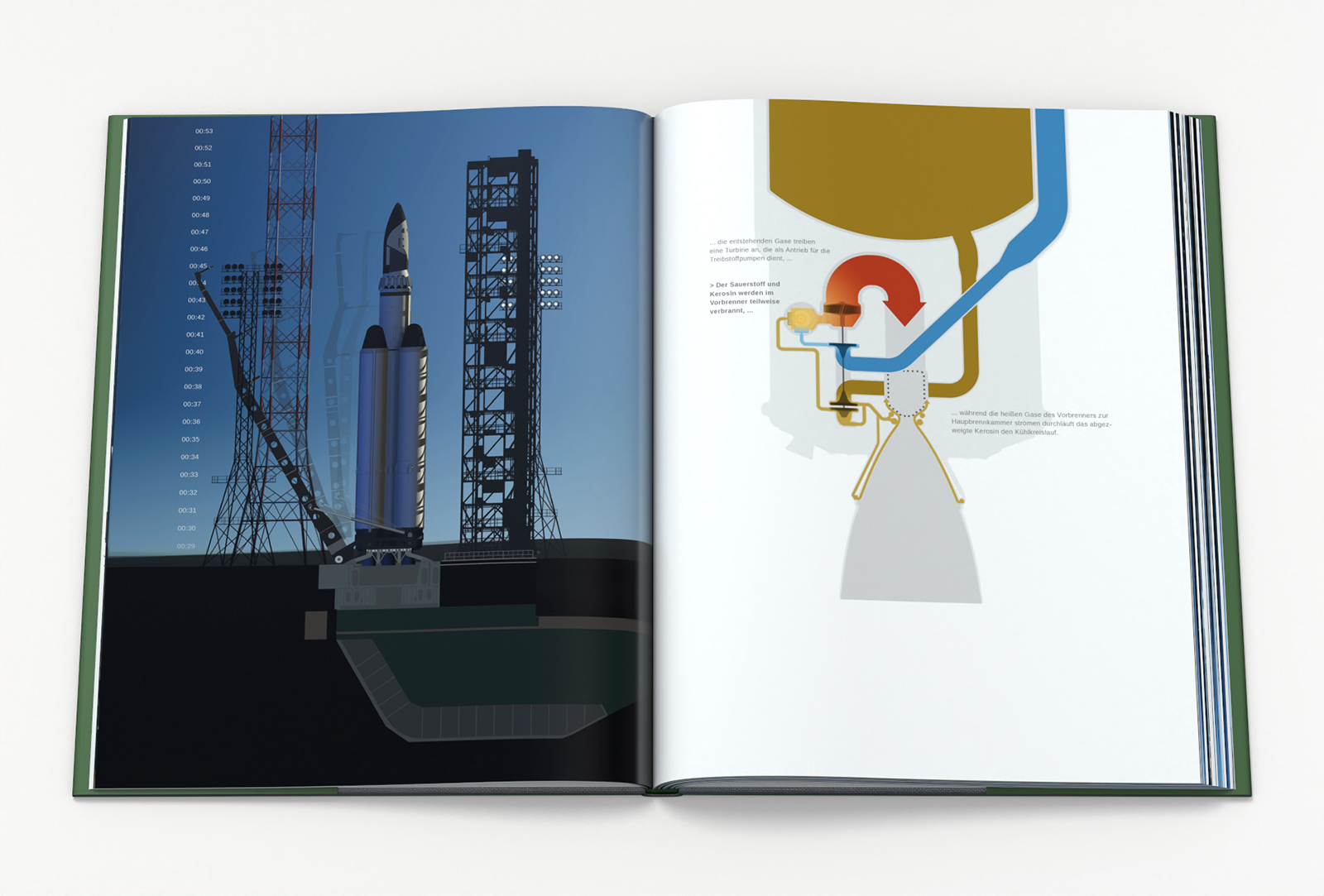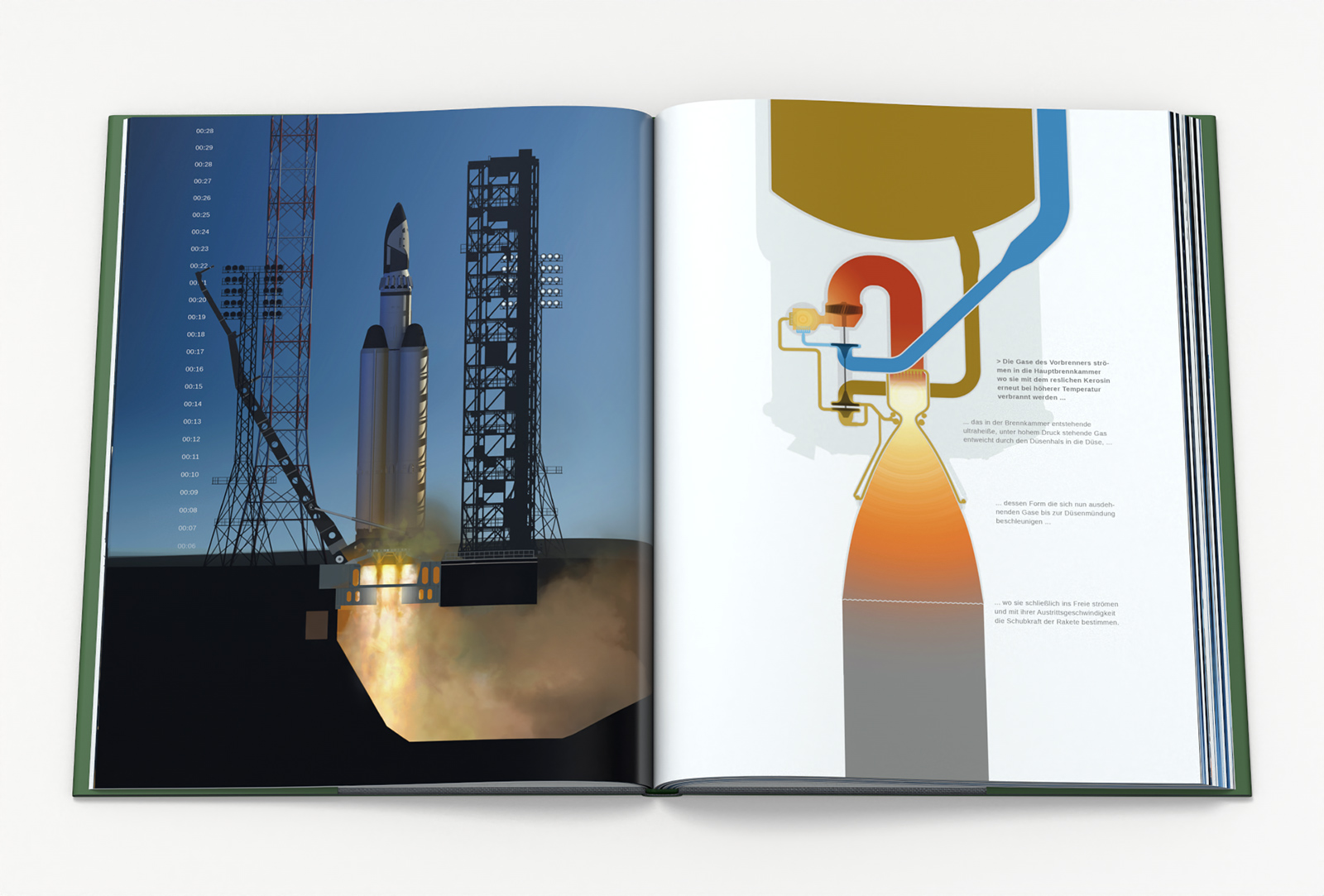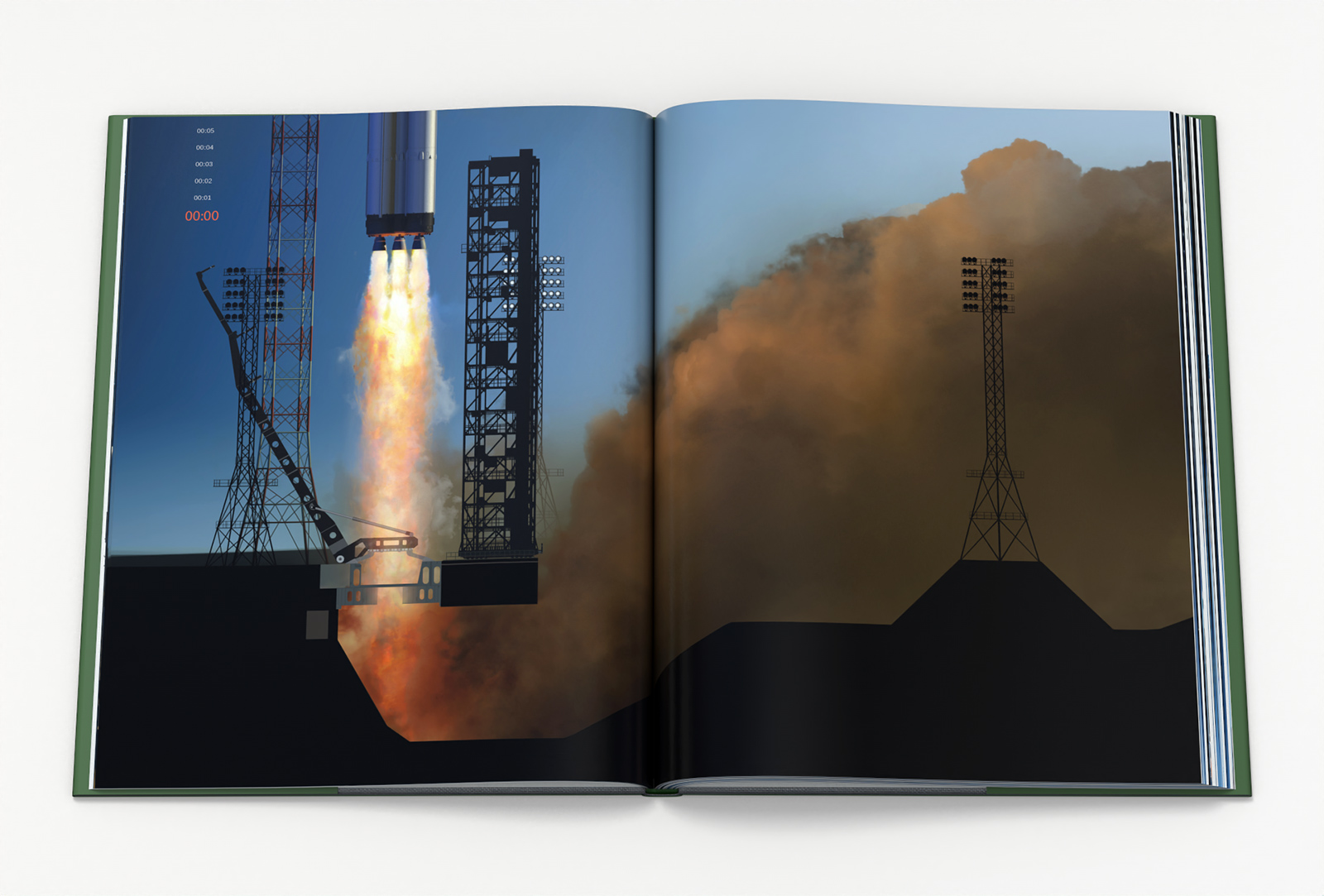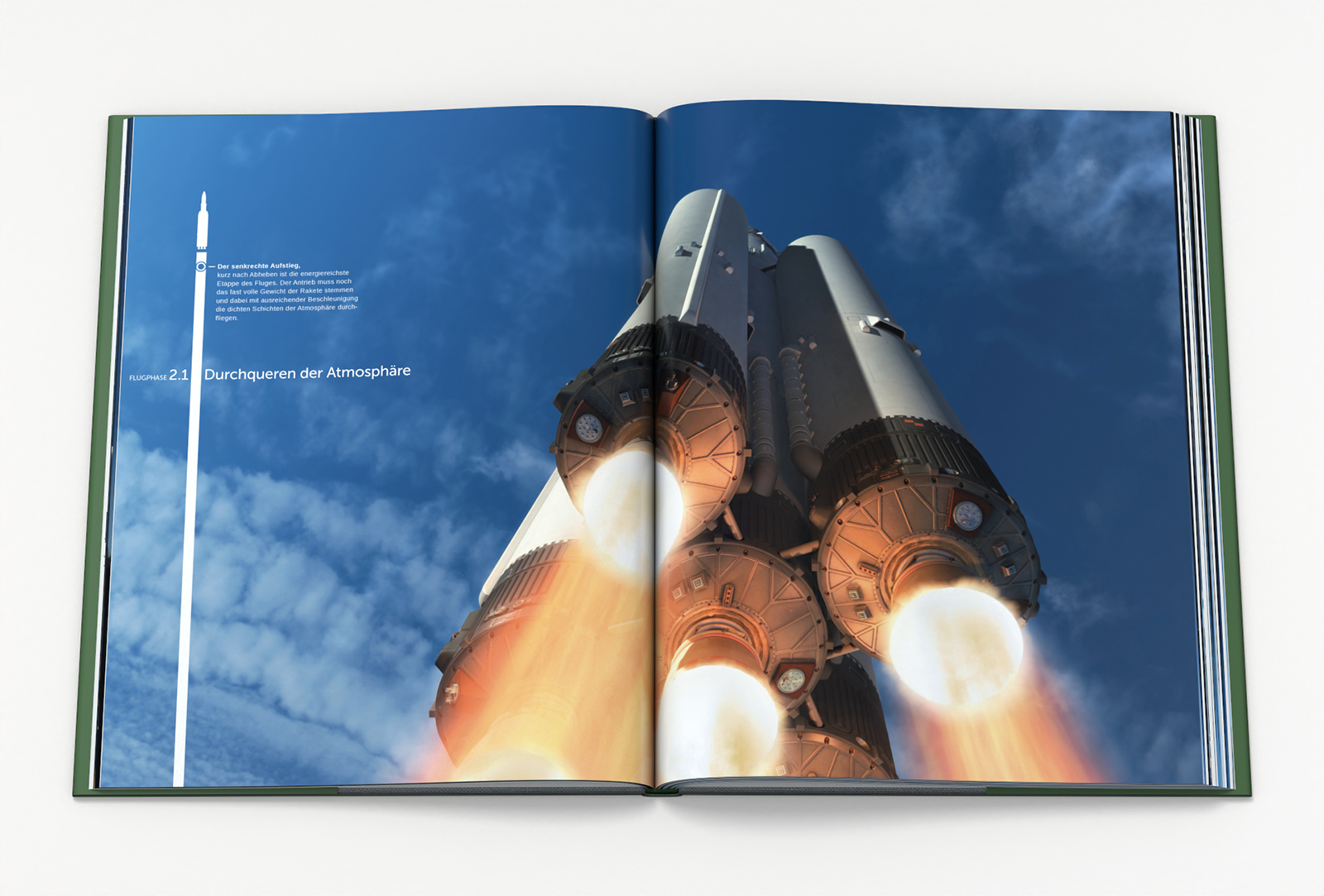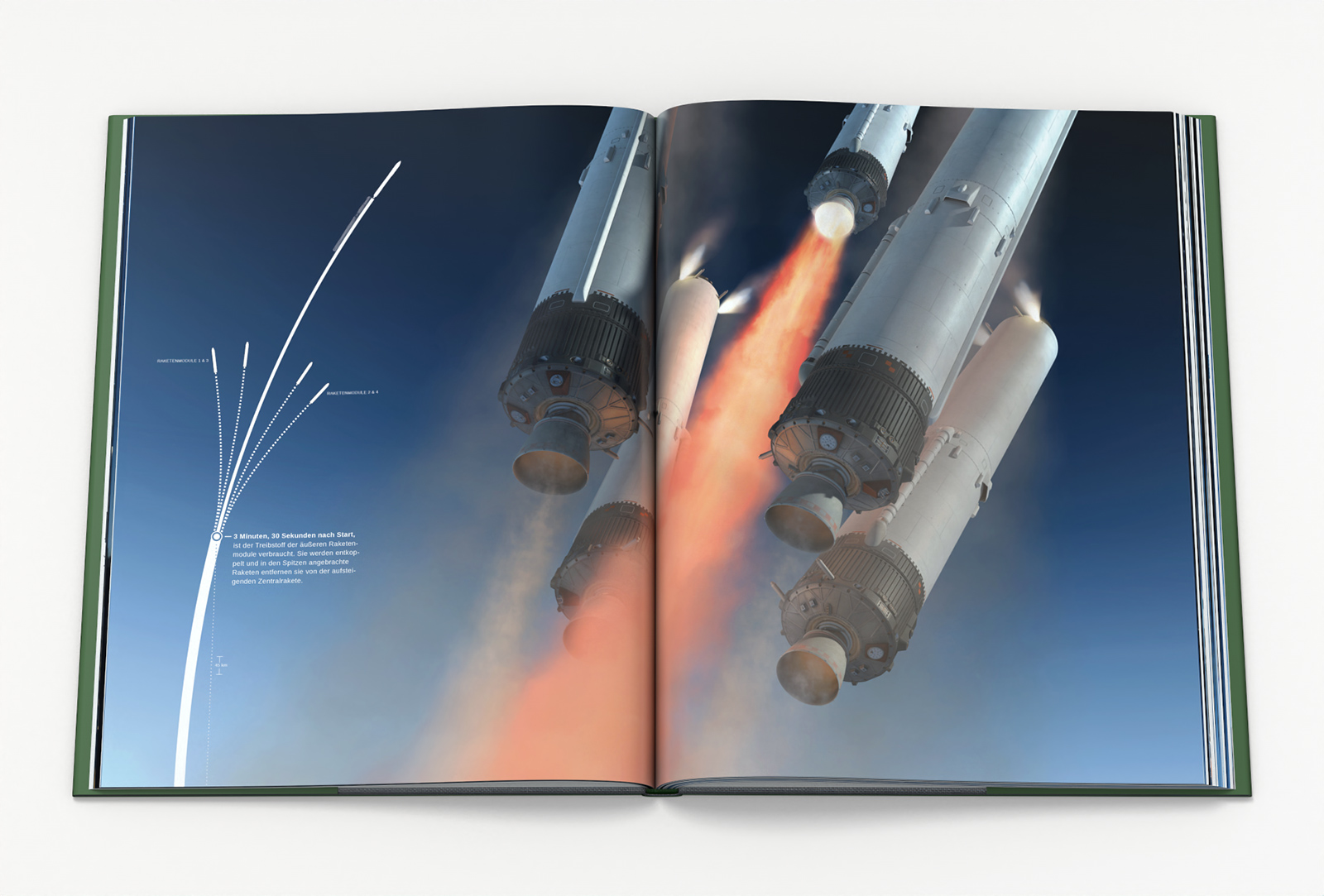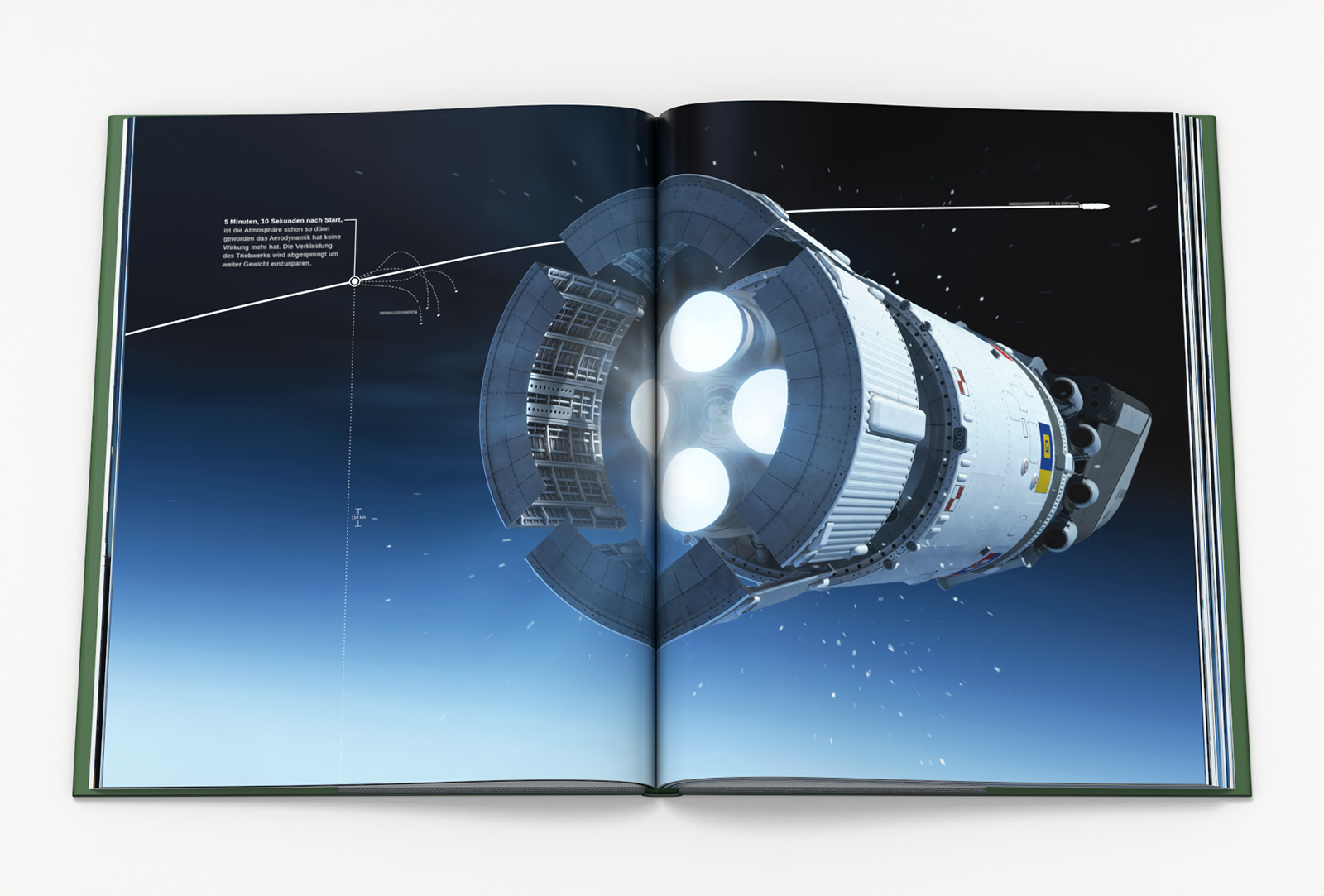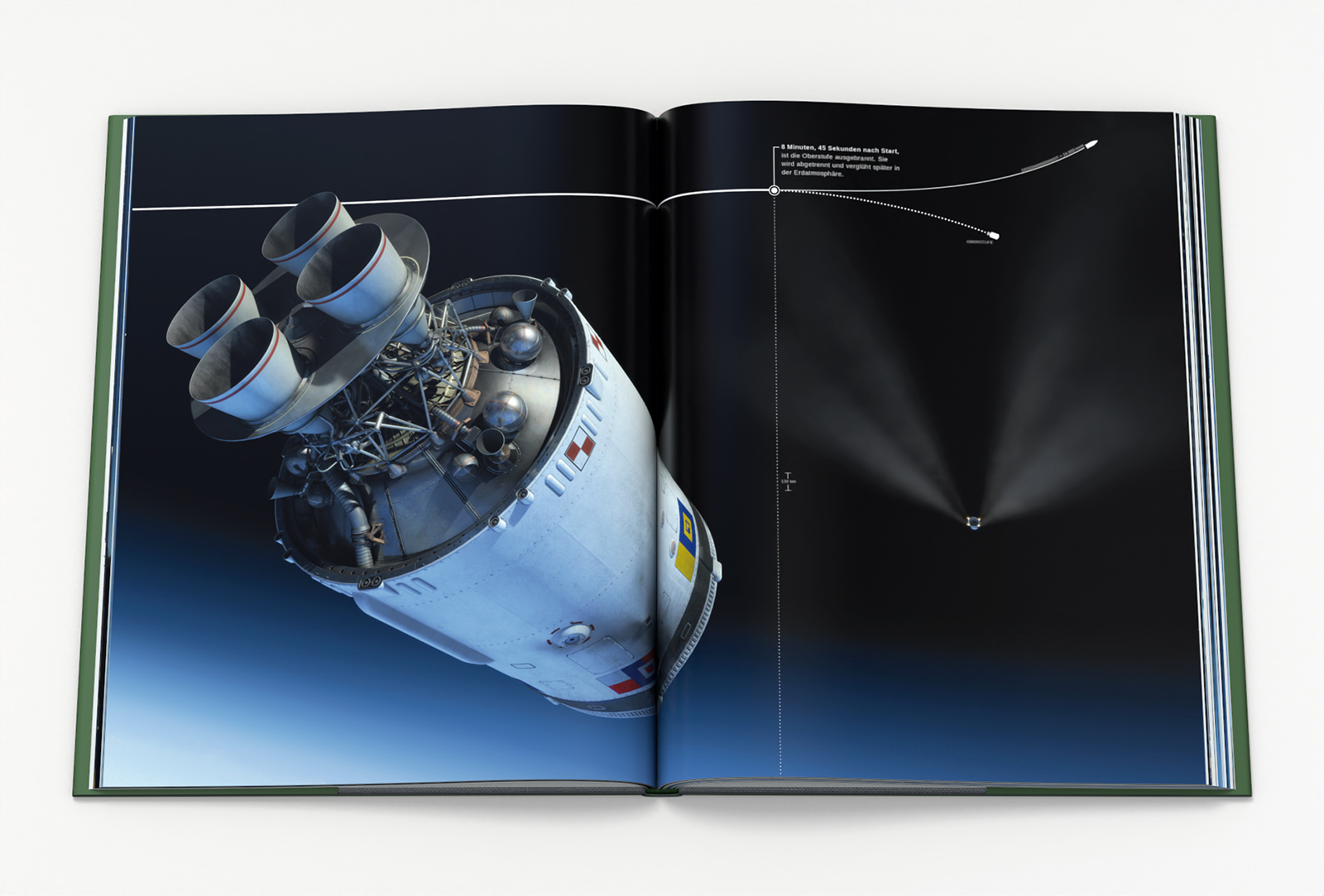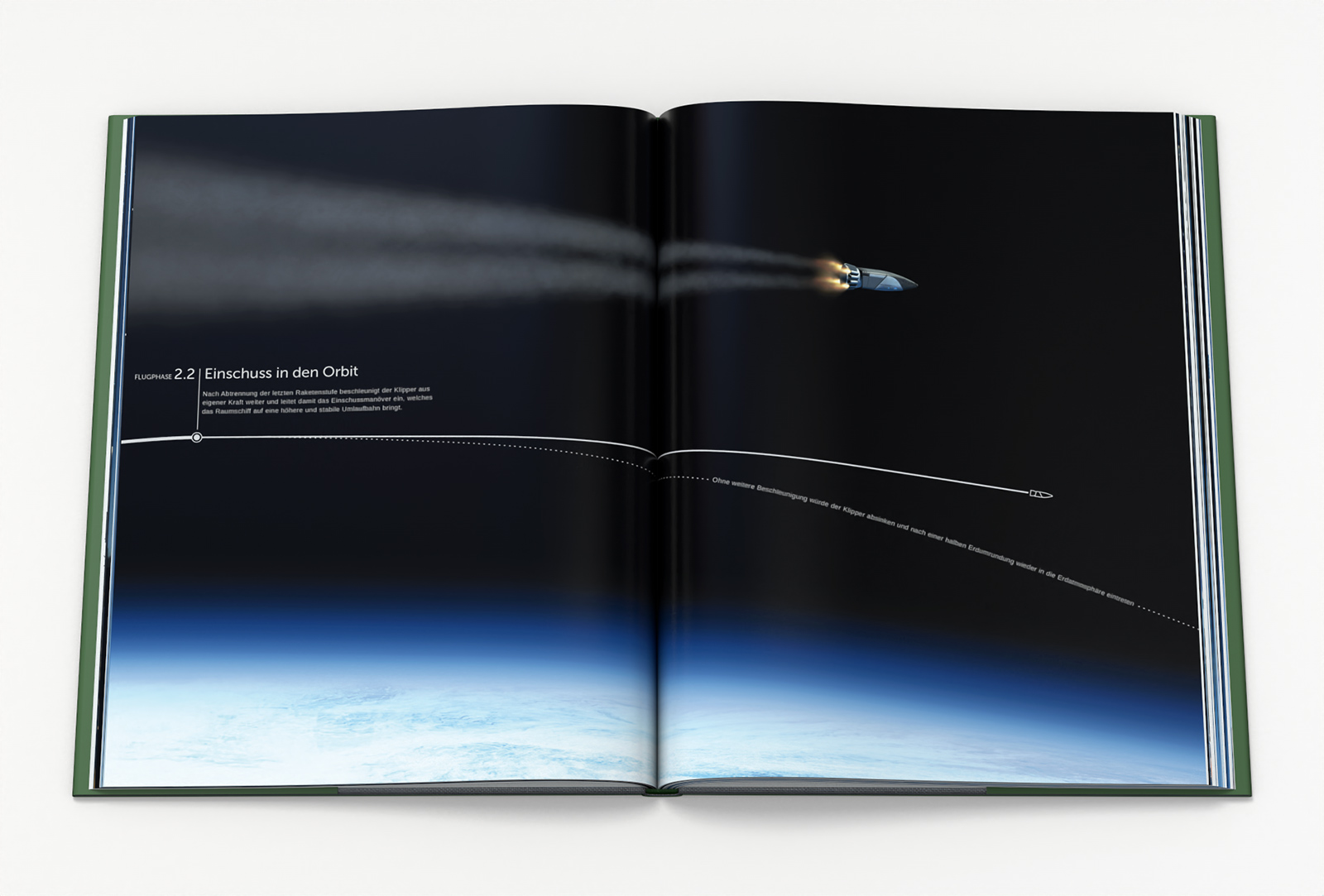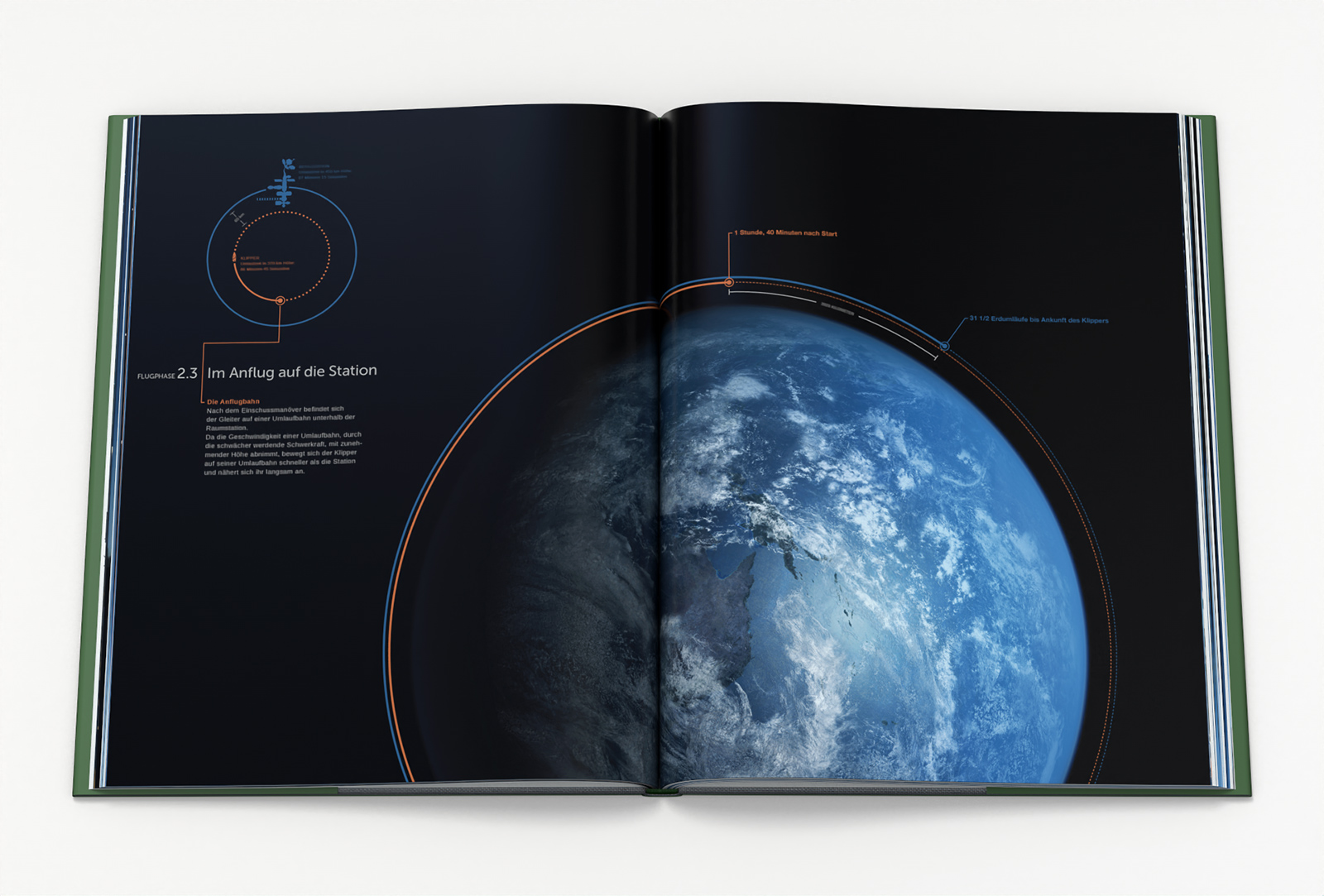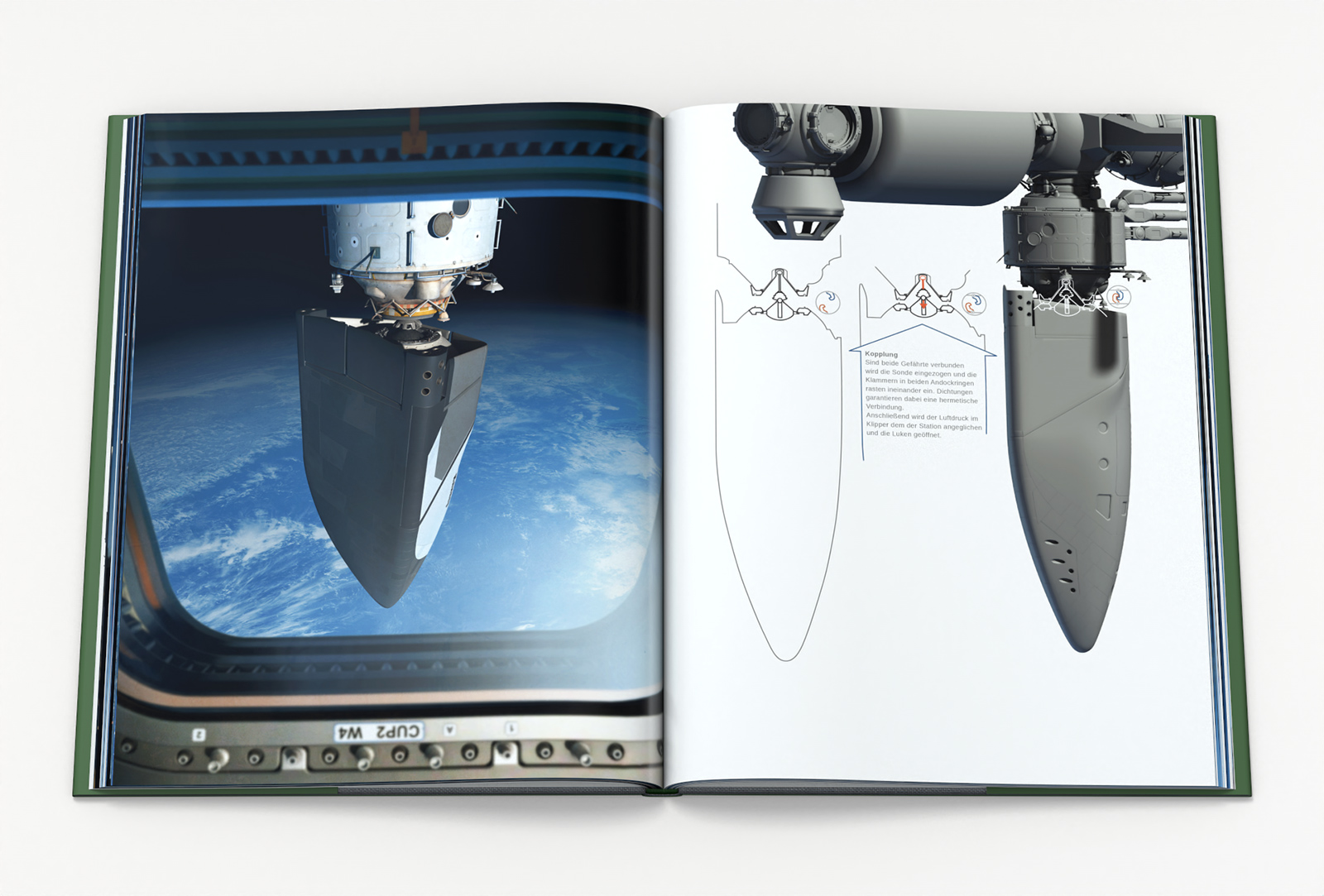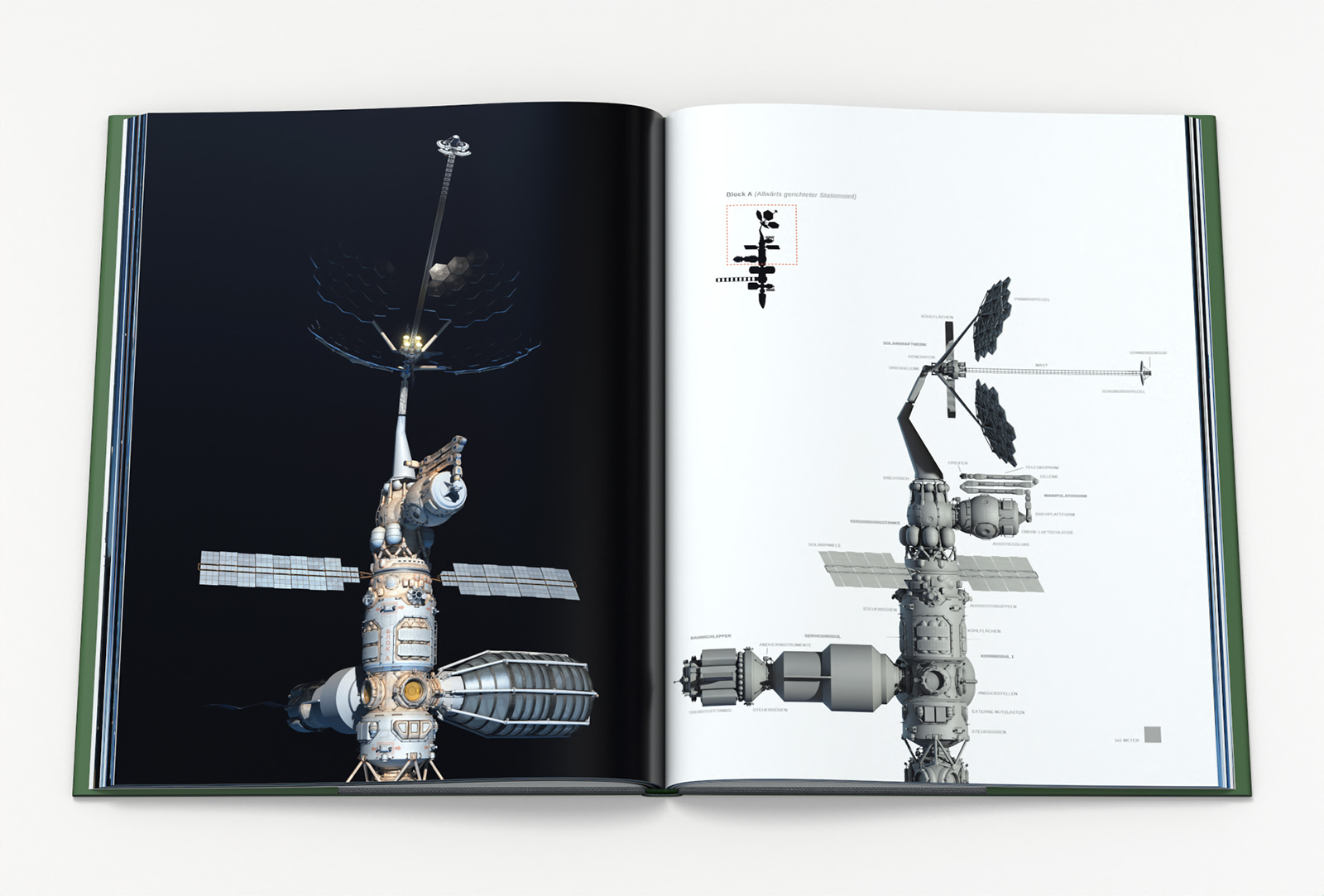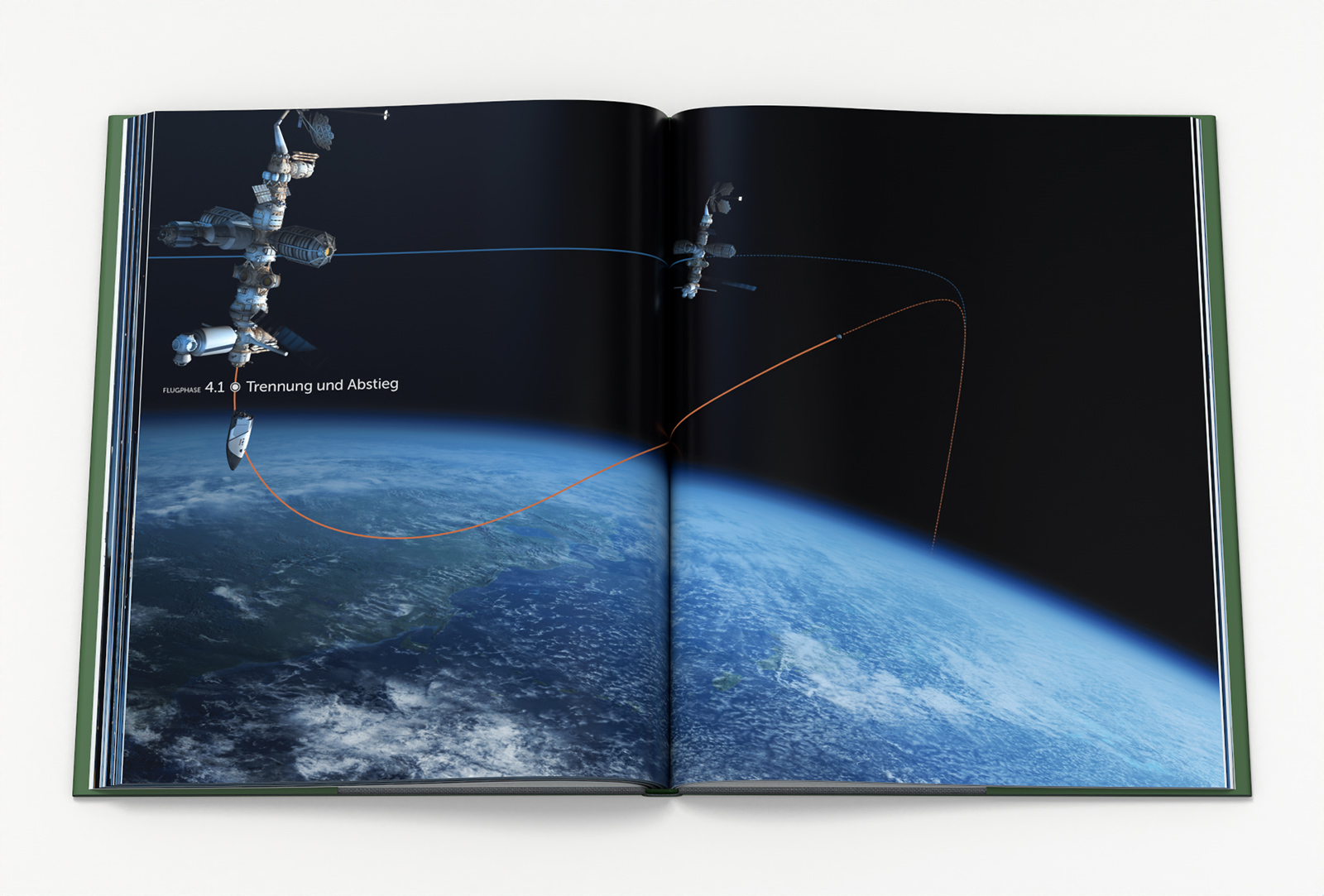Publisher
Personal Project
Size
228 x 292,6 mm
Publication date
Unpublished
Length
128 pages
Language
German
Topic
A fully illustrated and unpublished non-fiction book about a realistic flight into space. Central motif is the Russian spaceplane Clipper (Клипер). An existing concept for a future reusable spaceship. The book visualizes the flight to a space station in earth orbit, the stay on board the station and the return to earth.
Description
The book was completely designed, researched, written, and illustrated by me. It is based on my diploma thesis in informative illustration at the Hamburg University of Applied Sciences. The basic visual concept is to depict spaceflight as a chronological sequence of events or flight phases. The realistic illustrations of the spaceplane, rocket and space station are accompanied by reduced infographics that explain the individual flight phases and the relevant technical components.
Content
The book contains 15 chapters grouped into four flight phases. The first flight phase describes the launch preparation and the rocket launch. The second flight phase shows the ascent of the rocket into space, the maneuvers necessary to reach a stable orbit and the rendezvous maneuver with the space station. The third flight phase is dedicated to the space station. It describes the stations design and its expansion with new modules. The fourth flight phase shows the return to earth. The re-entry into the atmosphere, the gliding flight to the landing site and the landing itself.
Example: Chapter 1.3 – Countdown to Launch
The rocket launch is visualized in two image sequences. The exterior view shows the rocket being fueled and the launch tower moving away before ignition. The reduced cutaways show the ignition of a rocket engine and how it works.
Example: Chapter 2.1 – Ascent into Space
After launch, the rocket traverses the atmosphere. The image sequence of this chapter illustrates the separation of the burned-out rocket stages and the flight path of the rocket. The rocket was inspired by the Russian Angara 5 carrier rocket.

